A network pharmacology approach to investigate the mechanism of “Huangqi-Shanzhuyu” in the treatment of diabetic nephropathy
Hao-Yu Yu, Yu-Liang Zhang, Qian Cui, Guo-Wei Zhang*
1College of Traditional Chinese Medicine, Hebei University, Baoding 071000, China.
Abstract
Background: To explore the action mechanism of Huangqi (Radix Astragali) and Shanzhuyu (Fructus Corni) in the treatment of diabetic nephropathy based on network pharmacology, aiming to provide a basis for clinical application.Methods: The main active components of Huangqi and Shanzhuyu were discerned through the Traditional Chinese Medicine Systems Pharmacology Database and Analysis Platform (TCMSP), Traditional Chinese Medicine Integrated Database (TCMID). The targets related to diabetic nephropathy (DN) were obtained using Genecards,Therapeutic Target Database (TTD), and National Center for Biotechnology Information (NCBI) Gene. Subsequently,protein-protein interaction (PPI) networks were constructed with Cytoscape 3.7.2 and the STRING database. Gene Ontology (GO) and Kyoto Encyclopedia of Genes and Genomes (KEGG) pathway analyses were performed to analyze the intersection of targets via Database for Annotation, Visualization, and Integrated Discovery (DAVID)6.8. Built on the above analysis, we made a “Chinese medicine-chemical composition-target gene-disease” network.Results: Twenty-one active components were predicted from the Huangqi and Shanzhuyu herb pair, such as jaranol,mandenol and sitosterol. These components were applied to 41 targets mainly involved in many biological processes such as the PI3K-Akt signaling pathway, vascular endothelial growth factor (VEGF) signaling pathway, regulation of sodium ion transport and steroid-binding. Conclusion: This study proposes the network pharmacology method and identifies the potent combination therapeutic mechanism of Huangqi and Shanzhuyu for diabetic nephropathy(DN) through multiple targets and routes, this strategy will lay a good foundation for further in-depth study of the mechanism of action.
Keywords: Huangqi (Radix Astragali), Shanzhuyu (Fructus Corni), Diabetic nephropathy, Network pharmacology
Background
Diabetic nephropathy (DN) is one of the severe complications of diabetes, primarily type 2 diabetes.One-third of people with type 2 diabetes have the complication of DN [1]. The pathology of DN is complicated, and most of them show chronic progressive development, which can eventually develop into renal failure with high mortality [2]. The current clinical treatments for delaying the progression of DN mainly include controlling blood sugar, blood pressure, regulating lipid metabolism, anti-oxidation,and inhibiting inflammation, et al, but the efficacy is not ideal [3, 4].
DN belongs to the category of “edema, exhaustion,and barrier” of traditional Chinese medicine. It can’t quench the thirst, resulting in depletion of body fluid,visceral meridian deprivation, and kidney damage for a long time. Therefore, the basic pathogenesis of type III DN is Qi (vital energy)-Yin (one of the two opposing principles in nature) deficiency, blood stasis and obstruction [5]. Qi deficiency makes blood transport powerless, Yin deficiency makes blood circulation difficult. Traditional Chinese medicine, with its multichannel and multi-target features, has a significant effect on the treatment of DN [6].
Huangqi is a kind of traditional Chinese medicine of invigorate Qi and activate blood. Studies have shown that Huangqi has the functions of reducing blood sugar and urinary protein excretion, protecting the kidney, and improving renal hemodynamics. It has the functions of anti-protein non-enzymatic glycation, antioxidant,growth factor and cytokine regulation [7]. Shanzhuyu is a Chinese medicine for nourishing yin and nourishing the nephridium, which can nourish the liver and kidney,solidify and reduce urine. It has the effects of lowering blood sugar, immunosuppression, and antiinflammatory [8]. The Huangqi-Shanzhuyu is a clinically common drug pair of modern expert Zhang Xichun. The combination of the two is compatible with Qi and Yin tonic, and the effect of boost Qi and firm astringency is enhanced [9].
Huangqi-Shanzhuyu has a good clinical effect, but the mechanism is not clear and the theoretical basis is lacking, which limits a large number of clinical applications of drug pairs. In this study, with the help of network pharmacology research methods, the main active chemical constituents and targets of Huangqi-Shanzhuyu were screened, and the related targets known by DN were tapped. Based on network topology analysis and Database for Annotation, Visualization,and Integrated Discovery (DAVID) database enrichment analysis, the mechanism of action of DN provides new ideas for the research on the mechanism of Huangqi-Shanzhuyu and provides a new basis for further exploration.
Methods
Constructing the chemical composition database of Huangqi-Shanzhuyu
Firstly, the chemical components of Huangqi-Shanzhuyu were queried using Traditional Chinese Medicine Systems Pharmacology Database and Analysis Platform (TCMSP)(http://tcmspw.com/tcmsp.php) [10], Traditional Chinese Medicine Integrated Database (TCMID)(http://www.megabionet.org/tcmia/) [11]. Secondly,according to the conditions of OB ≥ 30%, BBB ≥ -0.3, DL ≥ 0.18, conduct preliminary screening,download the structure of the above chemical components through the PubChem database, and the structural components not included in the database are drawn and constructed using the ChemBioDraw Ultra 14.0 software to construct a small molecule database.
Target prediction of effective active ingredients of Huangqi-Shanzhuyu
In this study, the TCMID and TCMSP databases were used to search for potential targets related to compounds of Huangqi-Shanzhuyu, and the UniProtKB search function (https://www.uniprot.org/) in the Uniprot database was used to enter the target protein name and limit the species as “Homo sapiens”, except for nonhuman targets. All protein names obtained from the query were corrected to official names. Cytoscape 3.7.2 was used to construct the “compound-target” network.
Screening of DN disease targets
The genes of targets associated with “diabetic nephropathy” disease names were collected through Therapeutic Target Database (TTD)(http://db.idrblab.net/ttd/) [12], GeneCards (https://www.genecards.org/) [13], and National Center for Biotechnology Information (NCBI) Gene database(https://www.ncbi.nlm.nih.gov/gene/) [14]. After removing the duplicate genes, the target data set of DN was established.
Constructing a “Chinese medicine-chemical composition-target gene-disease” network
Venn analysis was performed on the targets of the main chemical components of Huangqi-Shanzhuyu and the DN targets data to obtain a common gene set. The target of the effect of Huangqi-Shanzhuyu on the treatment of DN was initially explored. Then, the intersection target set was imported into the DAVID database(https://david.ncifcrf.gov/, DAVID 6.8), the restricted species is human. All target gene names were corrected to their official names, and a “Chinese medicinechemical composition-target gene-disease” network was created using Cytoscape 3.7.2 software.

Table 1 Basic information of 21 active compounds in Huangqi and Shanzhuyu
Establishing biomolecular network and enrichment analysis
Creating a protein-protein interaction (PPI)network.The intersection targets obtained by Venn analysis are summarized into a table, and imported into the STRING database (https://string-db.org/), and the restricted species is human. Protein-protein interaction(PPI) information was obtained and then a PPI network was created to find the target and the interaction between targets. Then key targets were selected according to the network topology theory. It had higher information transmission efficiency in the network,affected more nodes, and played a significant role in the network. The topological analysis was performed on the intersection network through DAVID, and the analysis content included degree centrality (DC), betweenness centrality (BC), closeness centrality (CC).
Gene Ontology (GO) and Kyoto Encyclopedia of Genes and Genomes (KEGG) pathway enrichment.
GO and KEGG pathway enrichment analysis was performed on the key target genes of Huangqi-Shanzhuyu treatment DN through the DAVID database.Enrichment analysis included biological processes and signaling pathways to study the possible mechanism of treatment of DN with Huangqi-Shanzhuyu. Calculated eachP-Value of the enrichment result, withP-Value ≤0.05 as the screening condition,P-Value < 0.01 was considered to be significant enrichment, and sorted theP-Value according to the order from small to large.
Results
Active compounds in Huangqi and Shanzhuyu
Based on TCMSP and TCMID databases, 87 chemical compounds in Huangqi and 226 chemical compounds in Shanzhuyu were identi fi ed. After the screening was performed for OB ≥ 30%, DL ≥ 0.18, and BBB ≥ -0.3,21 active compounds were obtained (Table 1). There were 10 active ingredients of Huangqi and 11 active ingredients of Shanzhuyu.
Compound-target interaction network
A total of 80 targets of the active compounds were searched via the TCMSP and TCMID databases. These targets were transformed into gene names and gene IDs via the Uniprot database. The “compound-target”interaction network was created via Cytoscape 3.7.2 software (Figure 1). The network intuitively reflected the interaction of these compounds with the target.Among them, the blue node represented the target, the pink node represented the active compounds of Huangqi, and the green node described the active compounds of Shanzhuyu. Each edge described the interaction between the active compounds and the target.In the correspondence between active compounds and targets, there was generally a phenomenon that one active compound had multiple targets and multiple active chemical components correspond to one target.Huangqi-Shanzhuyu may act synergistically with multiple pathways, multiple links and multiple targets.
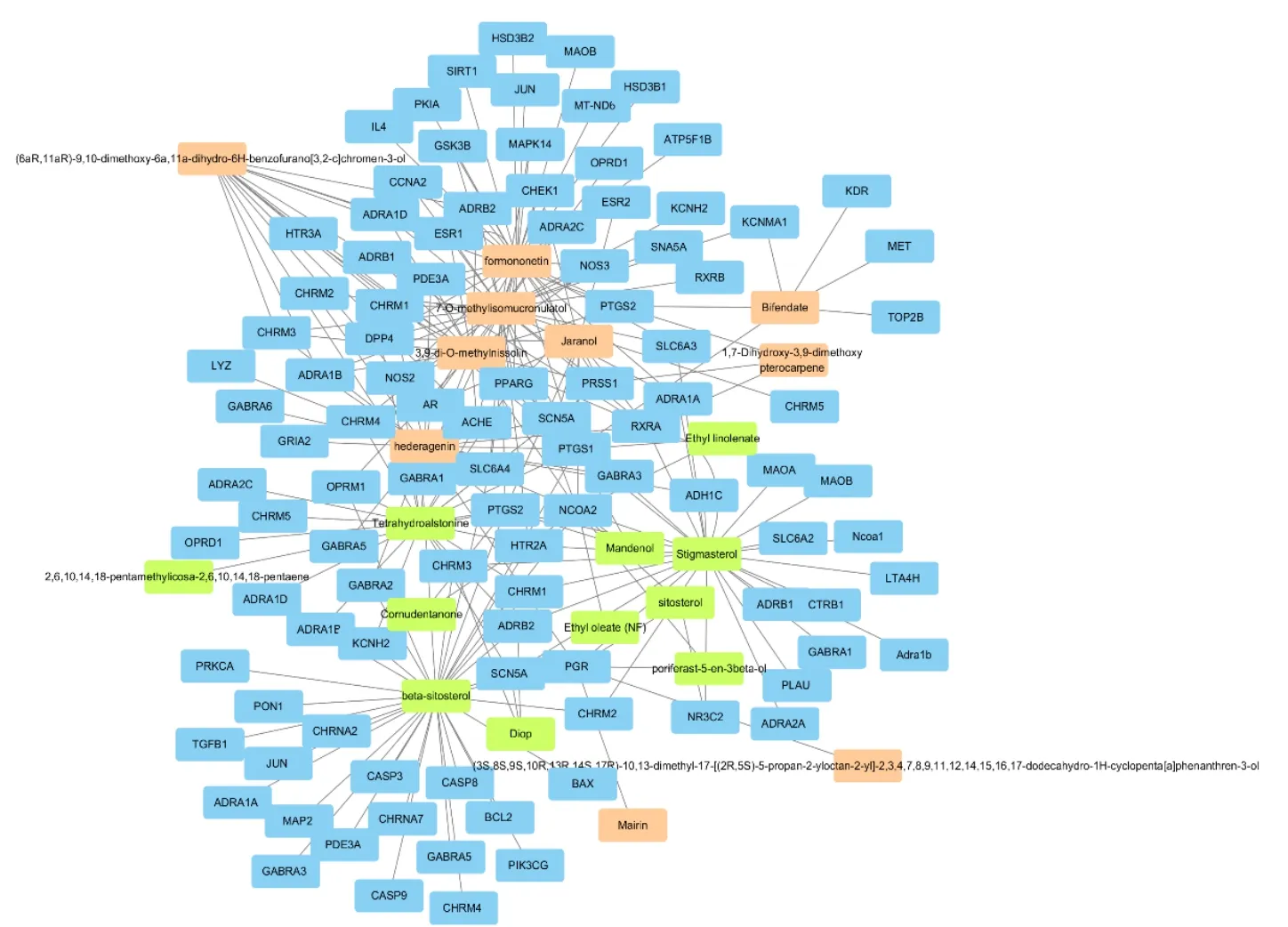
Figure 1 Huangqi-Shanzhuyu compound-target network
DN disease targets
A total of 3,087 DN-related genes were collected after excluding duplicates that 23 targets were obtained via the TTD, 3,069 targets were obtained via GeneCards and 415 targets were collected via NCBI Gene databases.
“Chinese medicine-chemical composition-target gene-disease” network
After Venn analyzing DN-related targets and active compound targets, 43 overlapping targets were recognized as candidate targets (Figure 2).
These candidate targets were imported into the DAVID database, excluding non-human targets, and a total of 41 potential targets were obtained. The target gene name was corrected to the official name, and a network of “Chinese medicine-chemical compositiontarget gene-disease” was constructed (Figure 3).
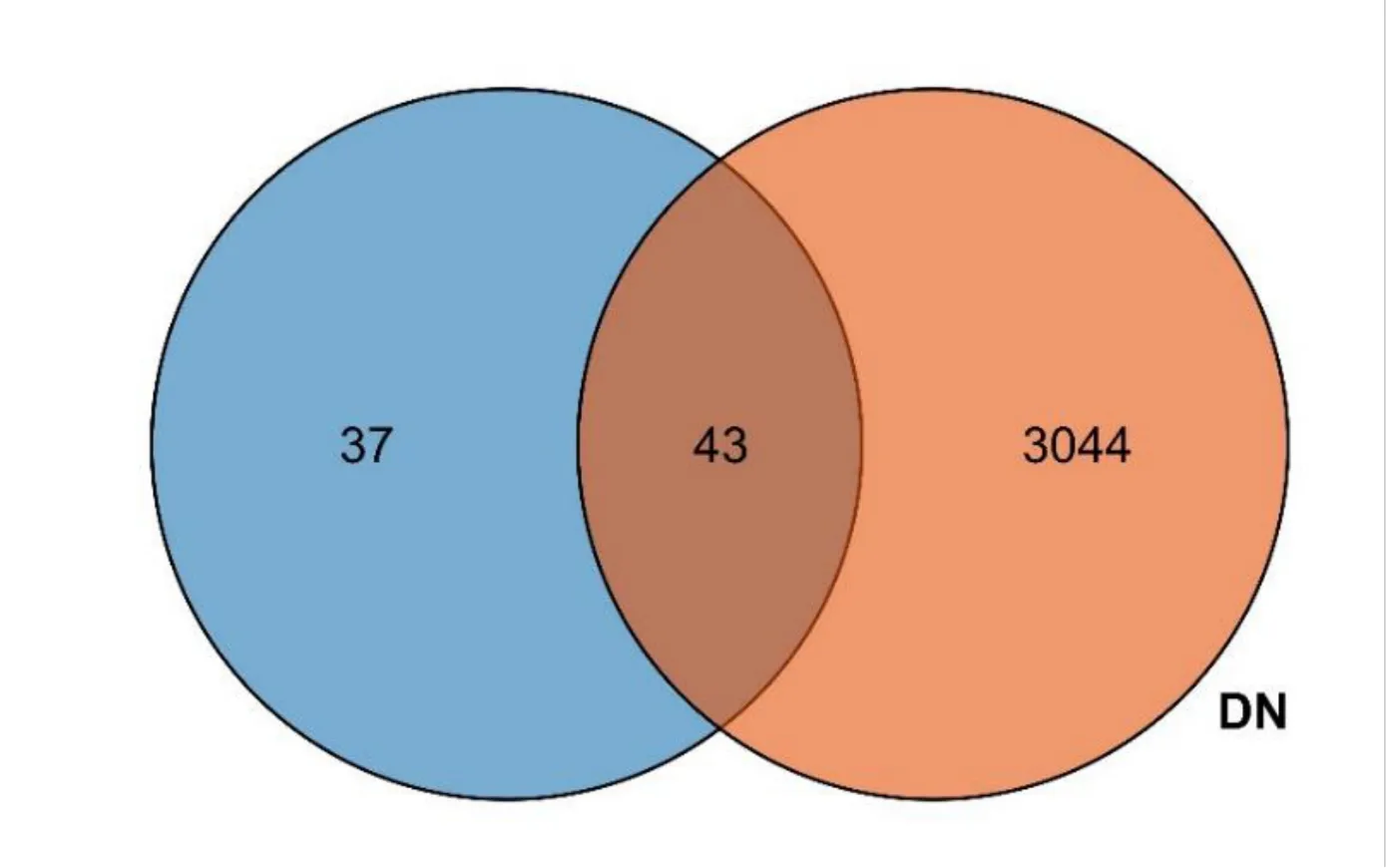
Figure 2 Venn analysis diagram

Figure 3 “Chinese medicine-chemical composition-target gene-disease” network
Establishing a biomolecular network and enrichment analysis
PPI network analysis.Based on 41 candidate targets,a PPI network was established by importing the gene ID of the candidate targets to the STRING database.Cytoscape 3.7.2 was used to visualize the PPI network.The color and size of the nodes re fl ected the degree value, and larger and darker nodes meant a higher DC value (Figure 4). The median of three topological indexe was calculated, and 28 core targets were obtained. Network topology parameters DC, BC, and CC were obtained by topology analysis via the Network Analyzer tool. Based on the DC, the top ten topological analysis parameters are arranged from the largest to the smallest (Table 2). It was shown that treatment of DN with Huangqi-Shanzhuyu was a greater correlation withJUN, PTGS2, CASP3, MAPK14, ESR1, NOS3, TGFB1,KDR, SIRT1, PPARGand so on, which may be the key target protein for the treatment of DN.
Enrichment analysis.GO pathway enrichment analysis and KEGG pathway enrichment analysis was performed on the top 40 key target genes of the Huangqi-Shanzhuyu through the DAVID database. GO pathway enrichment analysis indicated that the mechanisms of Huangqi-Shanzhuyu against DN were related to the following pathways: regulation of sodium ion transport, regulation of cell proliferation, steroid binding, positive regulation of sequence-specific DNA binding transcription factor activity, and negative regulation of I-kappaB kinase/NF-kappaB signaling et al (Figure 5). KEGG pathway enrichment analysis was performed on the key targets through the DAVID 6.8 database, and sorted according to the number of genes enriched in the pathway “Count”. The more pathways,the higher the rank of the pathways.P-Value ≤ 0.05 as a screening condition, the top 10 pathways were represented (Table 3). The results showed that the pathways involved were pathways in cancer, PI3K-Akt signaling pathway, MicroRNAs in cancer, VEGF signaling pathway, TNF signaling pathway and so on.Enrichment analysis showed that diseases including hepatitis B, tuberculosis and toxoplasmosis were also significantly enriched (Figure 6).

Figure 4 PPI network
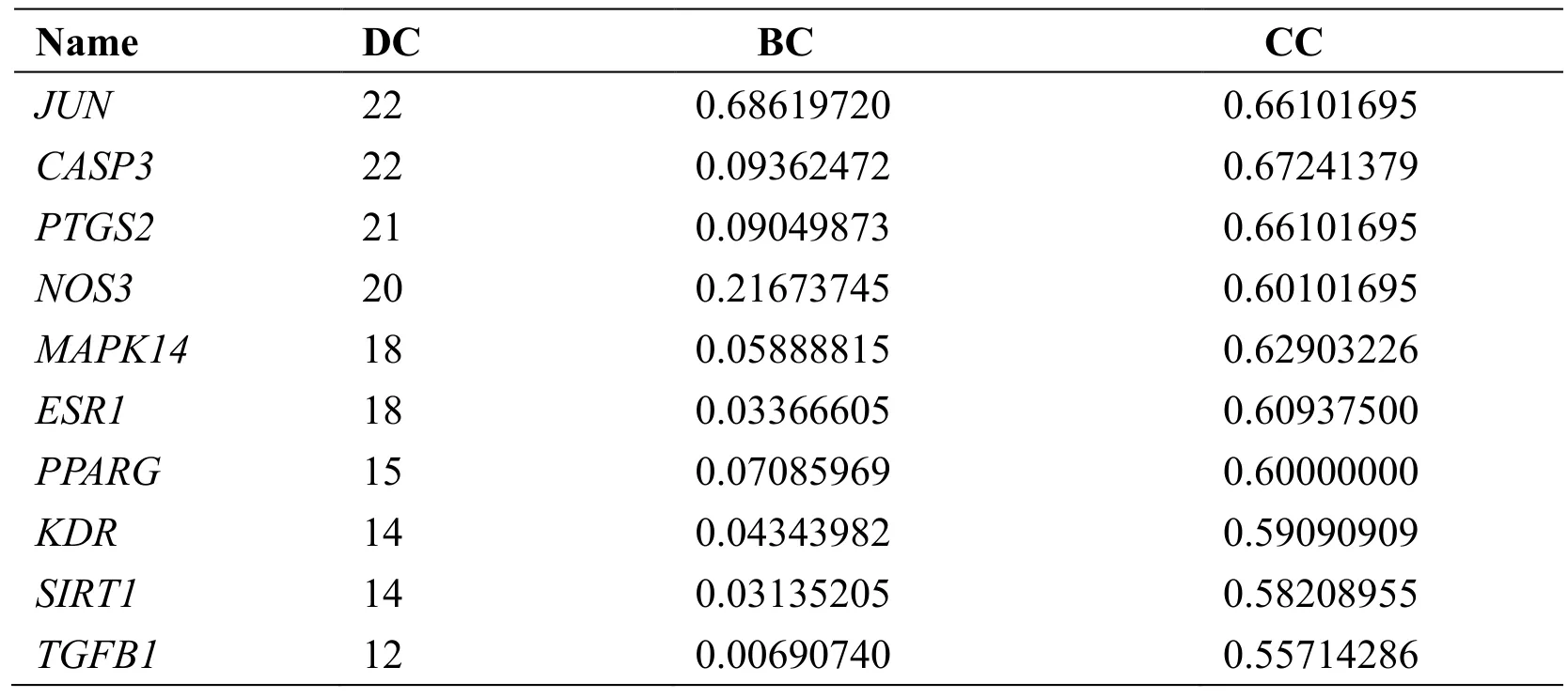
Table 2 Network topology index parameters
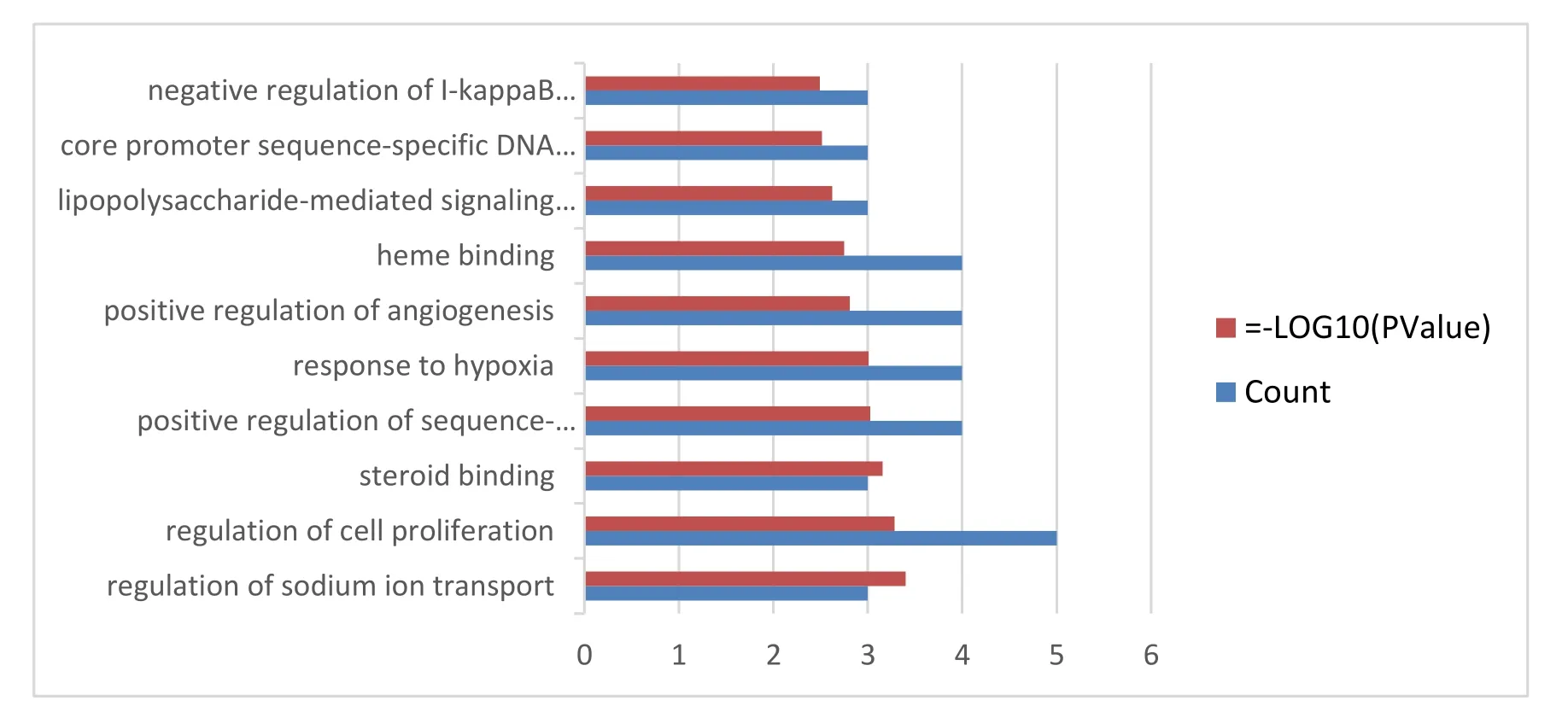
Figure 5 Results of GO enrichment analysis

Figure 6 Results of KEGG enrichment analysis
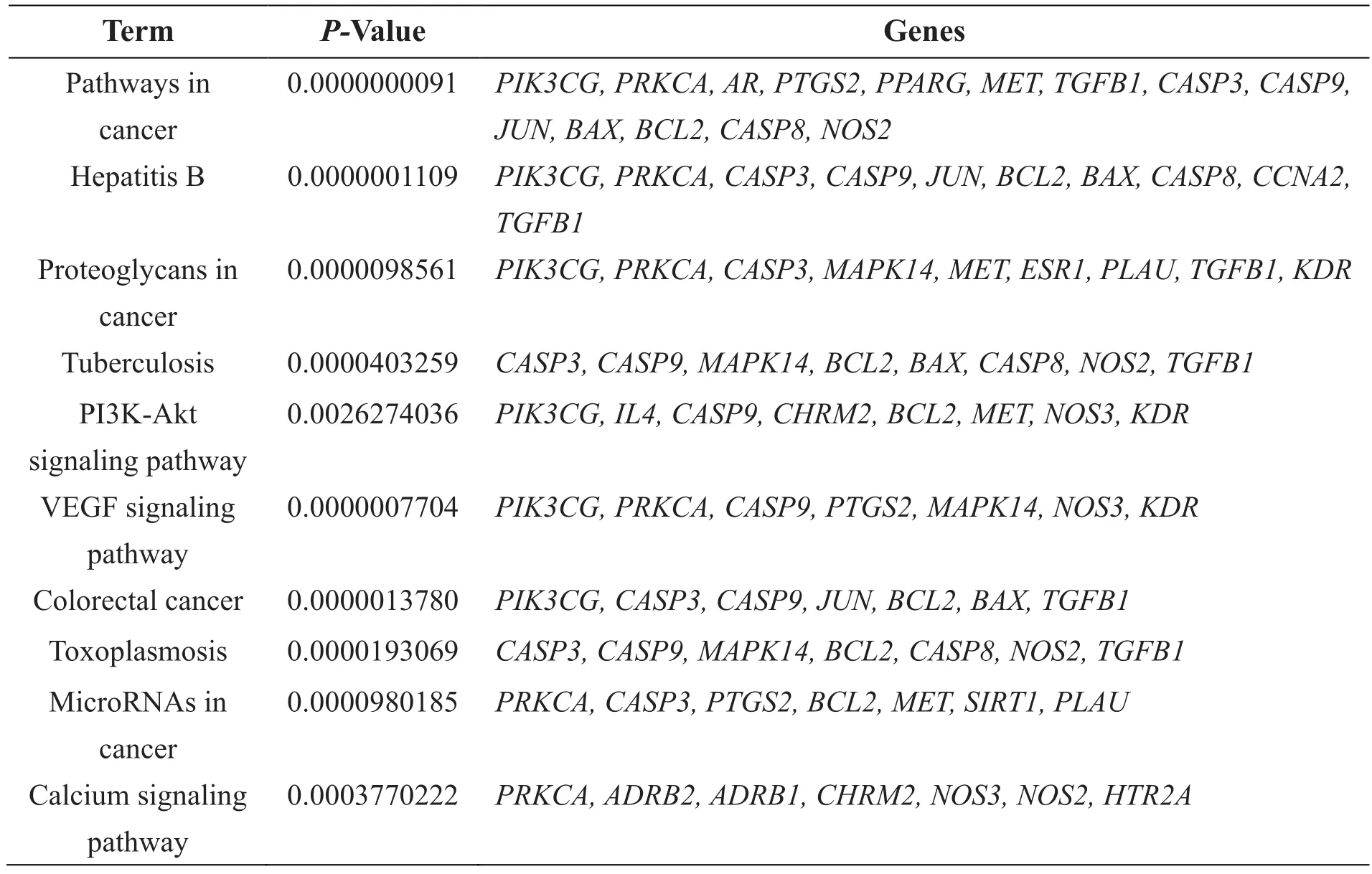
Table 3 Representing pathways and contained genes
Discussion
DN is one of the most common microvascular complications of diabetes. The method of treating DN with traditional Chinese medicine is to benefit Qi,nourish Yin and eliminate dampness and collaterals [15].However, due to the long period of basic research of DN,the complicated pathogenesis and the complex composition of traditional Chinese medicine, the research progress of traditional Chinese medicine treatment of DN is slow.
The pathological features of DN in modern medical research are mainly glomerular hypertrophy, mesangial hyperplasia, glomerular basement membrane thickening, extracellular matrix hyperplasia, renal tubular hypertrophy, and renal interstitial fibrosis [16].Its pathogenesis is complicated, involved in abnormal glucose and lipid metabolism, renal hemodynamic changes, inflammatory response, oxidative stress,apoptosis, genetic and multi-channel activation [17].For example, in a diabetic environment, the production of advanced glycosylation end products increases,activating nuclear factor-κB (NF-κB), mitogenactivated protein kinase (MAPK) and other signaling pathways, which in turn mediates the activation of transforming growth factor-β (TGF-β) signaling pathways and promotes the synthesis and deposition of extracellular matrix [18]. Under long-term hypoxia,diabetic nephropathy is combined with factors such as oxidative stress and inflammation, and fibroblasts are activated to aggravate the fibrosis process of the renal interstitial [19].
To provide a better theoretical basis for clinical use,this study uses a network pharmacology method to systematically explain the possible mechanism of Huangqi-Shanzhuyu on the treatment of DN.
This study systematically predicted the potential molecular mechanism of Huangqi-Shanzhuyu treatment of DN through network pharmacology. Then“traditional Chinese medicine-chemical compositiontarget gene-disease” interactive network of Huangqi-Shanzhuyu in the treatment of DN is created by Cytoscape 3.7.2. After searching and screening of the database, 21 active components of Huangqi-Shanzhuyu and 41 disease targets are screened, and 58 significant pathways and 66 significant biological processes are further screened. These results reflect that Huangqi-Shanzhuyu possible mechanism in the treatment of DN.
Through the analysis of the results, it is found that the treatment of DN with Huangqi-Shanzhuyu may be related to the PI3K-Akt signaling pathway, VEGF signaling pathway, MAPK signaling pathway and so on.Related diseases with higher degrees are hepatitis B,tuberculosis, colorectal cancer and toxoplasmosis et al.
At present, there have been studies that Huangqi has various effects such as hypoglycemic, antiinflammatory, and immune regulation. It has antioxidant and regulatory MAPK/PPAR-γ signaling pathways, which can down-regulate the level of adiponectin in kidney tissue, DN rats blood sugar and reduce urinary protein to play a protective role in the kidney [20-22]. Tumor necrosis factor-α (TNF-α) is an essential inflammatory mediator. Studies have shown that Huangqi polysaccharides have the function to reduce the synthesis and inhibit secretion of TNF-α protein in adipocytes, down-regulate TNF-α transcription level, and reduce insulin resistance [23].PI3K-Akt signal transduction is a direct regulatory pathway upstream of forkhead box O1 (FoxO1), which can regulate the shuttle of FoxO1 from the nucleus to the cytoplasm by controlling the phosphorylation level of FoxO1, resulting in the disappearance of FoxO1 transcription activity, thereby inhibiting the expression of downstream genes of FoxO1 to protect kidney tissue[24].
Shanzhuyu has the effects of reducing blood sugar,immunosuppression and anti-inflammatory. Wang Shiwei et al. found that the molecular structure of Shanzhuyu iridoid glycosides contains OH groups,which can release hydrogen atoms to combine with free radicals, thereby inhibiting the activation of NF-κB and MAPKs inflammation signaling pathways, and play a role in improving insulin in diabetes rat’s resistance effect [25]. Zhou et al. reported that it can inhibit the TGF-β/Smad signaling pathway in mesangial cells by activating the FXR receptor to reduce the progression of diabetic nephropathy [26].
At present, part of the mechanism of action pathways of Huangqi-Shanzhuyu in the treatment of DN has been confirmed. In this study, a networked pharmacological approach is used to systematically study the complicated molecular network relationship of Huangqi-Shanzhuyu in the treatment of DN. The mechanism provides a scientific basis, and also provides a reference for the effective substances and mechanism of action of traditional Chinese medicine on the treatment of DN.
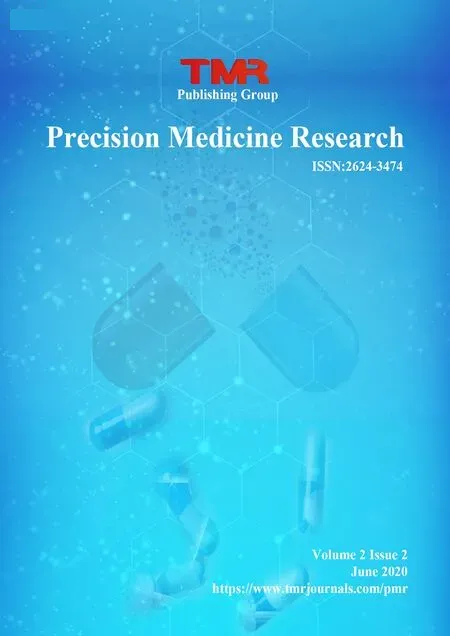 Precision Medicine Research2020年2期
Precision Medicine Research2020年2期
- Precision Medicine Research的其它文章
- Screening key target genes for pulmonary arterial hypertension based on bioinformatics
- Screening key target genes for severe acute respiratory syndrome coronavirus 2(SARS-CoV-2) based on bioinformatics and gene network
- Network pharmacological approach to explore the mechanisms of Lianhua Qingwen capsule in coronavirus disease 2019
- Use of network pharmacology and molecular docking to explore the potential mechanism governing the efficacy of Jinhuaqinggan granules in the treatment of novel coronavirus-induced pneumonia
